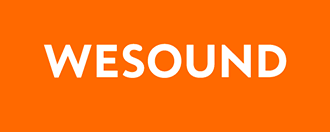Kick-Off:
- Written briefing based on your documentation
- Phone call to answer our queries
Stakeholder survey
- Option A: 4 in-depth interviews à 90 mins.
- Option B: online survey with ≤10 questions and ≤20 participants
Brand sound audit
Brand Sound Audit
- Analysis of brand positioning
- Market and competition analysis
- Analysis of previous audio applications (Sonic Customer Journey)
Workshop (4h interactive video conference with 2 consultants):
- Description of issues and objectives
- Presentation of the results of the stakeholder survey and the Brand Audit so far
- Development of a strategy basis with methods from coaching, economics and design thinking
- Evaluation and consolidation of results
- Summary and clarification of next steps
Documentation as road map with strategy concept and further recommendations for action (15-20 pages PDF)
AUDIO STRATEGY BASIS
Kick-Off:
- Written briefing based on your documentation
- Phone call to answer our queries
Brand sound audit:
- Analysis of brand positioning
- Market and competition analysis
- Analysis of previous audio applications (Sonic Customer Journey)
Workshop (4h interactive video conference with 2 consultants):
- Description of issues and objectives
- Presentation of results of analysis up till now
- Development of a strategy basis with methods from coaching, economics and design thinking
- Evaluation and consolidation of results
- Summary and clarification of next steps
Documentation as strategy paper with recommendations for action (4-8 pages PDF)
Instant Audio Coaching
Kick-Off:
- Written briefing based on your documentation
- Phone call to answer our queries
Coaching session (3h video conference with 2 consultants):
- Description of issues and objectives
- Development of solutions with methods from coaching, economics and design thinking
- Evaluation and consolidation of results
- Summary and clarification of next steps
Documentation as exposé with recommendations for action (1-2 pages PDF)
I'm interested in Instant Audio Coaching
I'm interested in Audio Strategy Basis
Im interested in Deep Dive Audio Strategy


